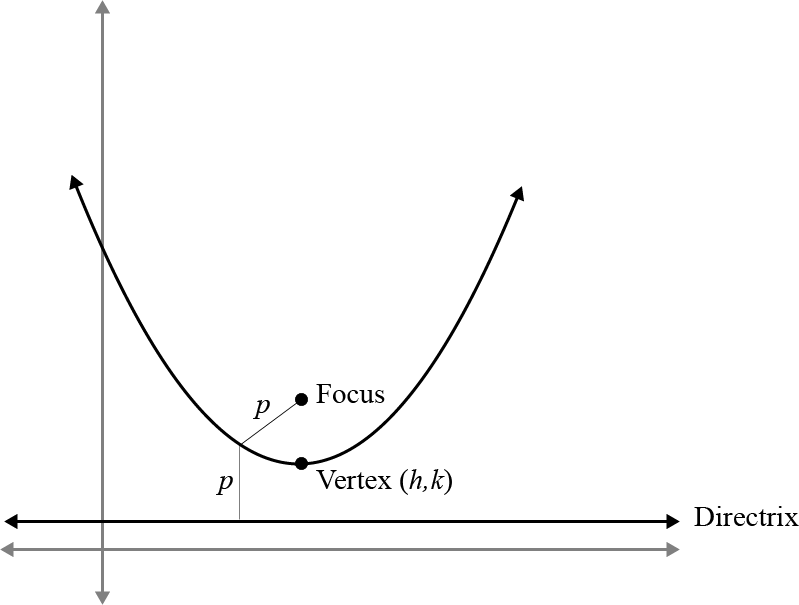What is the equation for a parabola with a vertex at (5,-1) and a focus at (5,-7)?
2 Answers
Explanation:
#"note that the vertex and focus are on the vertical axis"#
#x=5#
#"the focus and directrix are equidistant from the vertex"#
#"that is "-1-(-7)=6#
#"equation of directrix is "y=-1+6toy=5#
#"for any point "(x,y)" on the parabola"#
#"the distance to the focus and directrix are equidistant"#
#"using the "color(blue)"distance formula"#
#sqrt((x-5)^2+(y+7)^2)=|y-5|#
#color(blue)"squaring both sides"#
#(x-5)^2+(y+7)^2=(y-5)^2#
#(y+7)^2-(y-5)^2=-(x-5)^2#
#cancel(y^2)+14y+49cancel(-y^2)+10y-25=-x^2+10x-25#
#rArr24y=-x^2+10x-49#
#rArry=-1/24x^2+5/12x-49/24#
Explanation:
Let's graph the points we have.

The vertex and focus have the same x-coordinate. This tells us that this parabola doesn't open sideways, which means we'll be using the equation
(Here's a link if you want to see how this equation was derived!)
In the equation,

Since the vertex is already given, we can plug that in:
To find the p-value, simply subtract the y-value of the vertex from the y-value of the focus.
The p-value is negative. This makes sense, because the focus of the parabola is below the vertex, making the parabola open downwards. Downward parabolas have negative p-values.
Now, just plug that into the equation:


